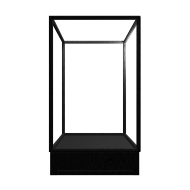As accepted by the doctoral committee, May 2019.
Leuven University / LUCA School of Arts Brussels | Alexandra Crouwers | Promotor: Wendy Morris | Advisor: Jan Verpooten
Through that which is seen: Dioramas & the Appeal of the Unreal
The research is embedded in the autonomous visual arts, by the use of digital 3D animation, immersive environments and installations, (virtual) archives, and both essayistic and fiction texts.
Research subject
My works arise from the virtual atelier: the 3D software environment in my computer. Worldbuilding (1) is one of the key components. Providing an immersive experience to the viewer – by altering the exhibition space, or by the use of large scale projections, is another.
1) Worldbuilding is the process of constructing an imaginary world, sometimes associated with a whole fictional universe
Various terms connect to the diorama-experience: the frame of the screen vs immersion, the tension between 2D and 3D, artificial versus real, visual illusions, simulated nature.
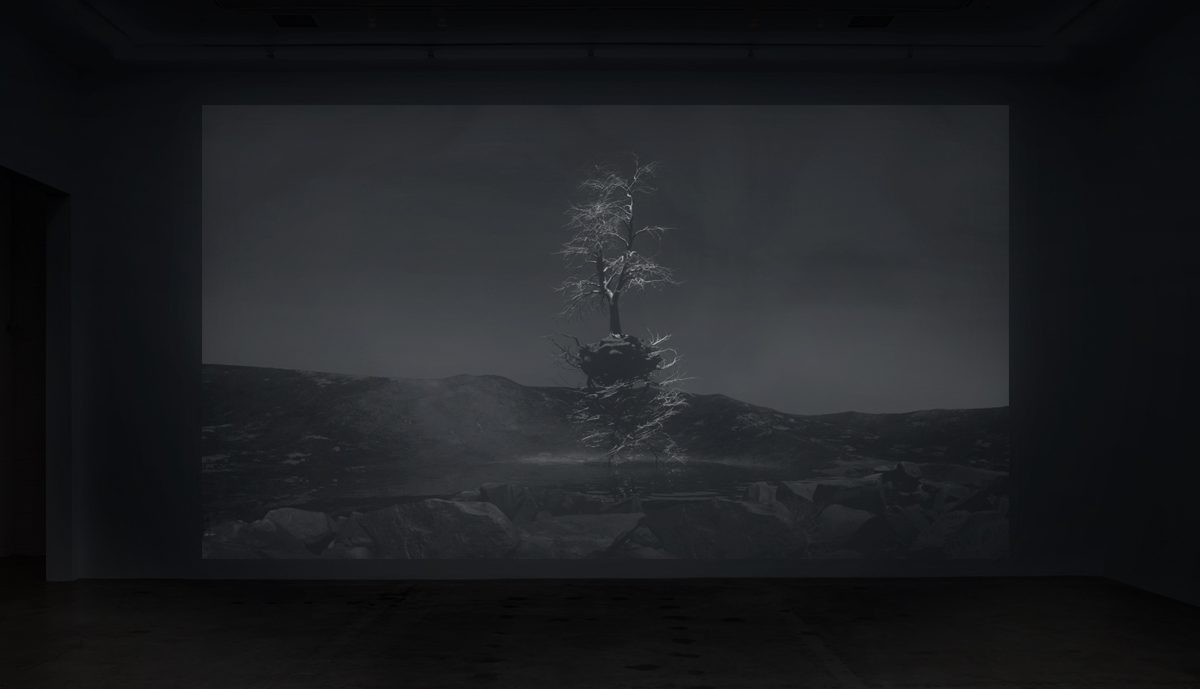
Through that which is seen
from the Greek di- through + orama that which is seen, a sight
The word diorama was first used for a large set made in 1822 by Louis Daguerre (the inventor of the eponymous photographic technique) and Charles Bouton, a painter. The scenes moved from a daylight to a nocturnal scene and back again, or show a location before and after an earthquake. Special effects included translucent paintings, false perspective and advanced lighting techniques using oil lamps, filters, sound, shutters and screens. The mechanism gave the illusion of movement in a still image.
Daguerre was working as a stage designer, and had been part of a panorama painting crew. His interest in visual illusions and stage theatrics lead to the development of the ‘diorama’, an immersive show without actors, intended to transport the audience to unknown territory, and with a mediative element.
A contemporary eyewitness account describes the sensation of a Parisian scene magically transported to London as follows:
Before we have long gazed on this scene the moon brings to emerge slowly—very slowly, from the opposite quarter of the heavens, its first faint rays tempering apparently rather than dispersing the gloom; presently a slight radiance touches the top of one of the pinnacles of the cathedral—and glances as it were athwart the dark breast of the stream; now growing more powerful, the projections of Notre Dame throw their light and fantastic shadows over the left side of the building, until at last, bursting forth in serene unclouded majesty, the whole scene is lit up, except where the vast Cathedral interrupts its beams, on the quay here to the left, and where through the darkness the lamps are now seen, each illumining its allotted space.

(…)
And yet all this is illusion (the sounds of course excepted) – a flat piece of canvas, with some colors distributed upon it, is all that is before us; though where that canvas can be, it seems, to one’s eyes at least, impossible to determine; they cannot by any mental processes be satisfied that buildings, distance, atmosphere are not before them – to such perfection has the Diorama been brought. (2)
2) London Volumes 5-6: Exhibitions in London, Edited by Charles Knight, 1843, pp. 284 – 288 (link)
The popularity of these kind of dioramas was short lived, due to the subsequent rise of photography, including portable special effects devices such as the stereoscope (3).
3) The stereoscope on Wikipedia
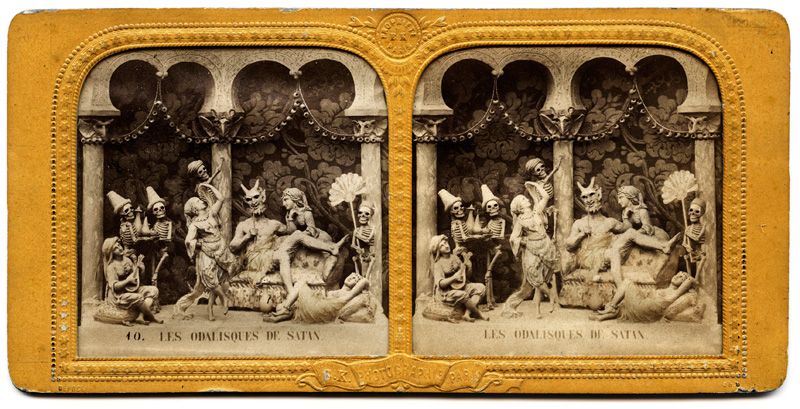
In 1893, the Skansen Biological Museum in Stockholm opened. On display were the first full scale natural history dioramas. These quickly became standard inventory for many museums all over the world.
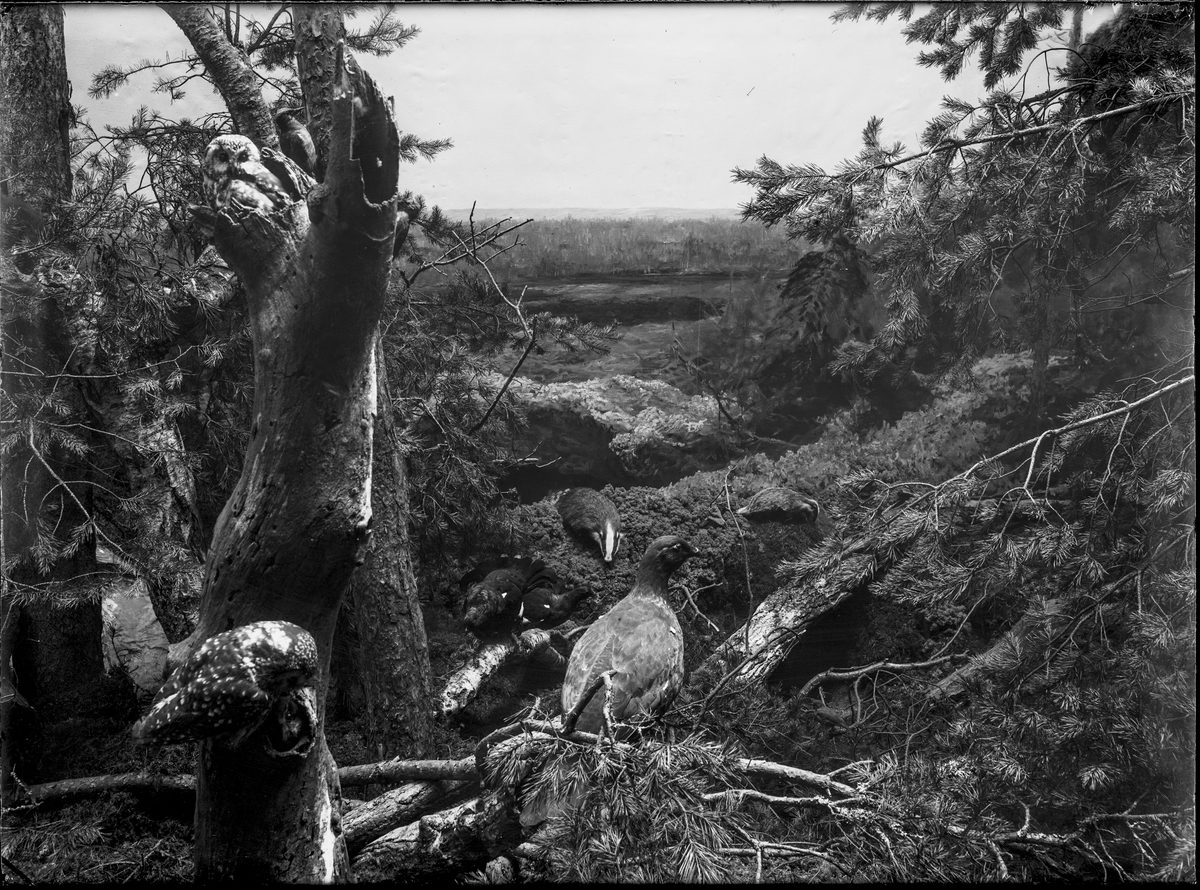
A sight that never was: hovering between fact and fiction
A diorama is a simulation and even though it has immersive qualities, the viewer is always aware that he/she is looking at it, instead of being part of it. The diorama-frame functions as a portal, a window on unreality. It tries very hard to be real, but it is obviously nothing like the real thing.
A diorama is either a three dimensional snapshot of a moment that never was, or stuck in a perpetual automated loop. The tension between lifeless artificiality and the desire to produce at least the illusion of real is where dioramas, to me, are actually moving.
From the diorama to the computer screen: illusions behind glass.
The research considers every kind of diorama, within the following parameters:
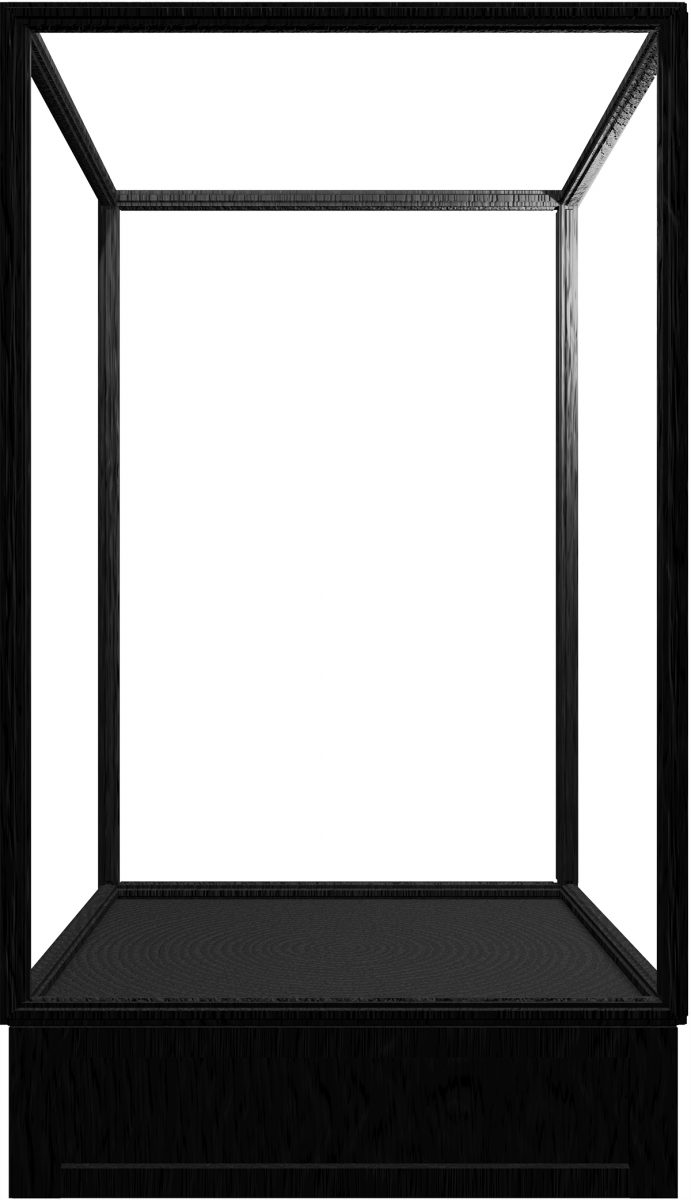
- The diorama as an immersive experience – this leaves out the miniature diorama, but focuses instead on the life-sized diorama
- The diorama as a simulation – this adds augmented reality, virtual dioramas
- The diorama as a model of both reality and fiction – this includes depictions from fairy tales, religion or mythologies
- The diorama as a non-interactive ‘definitive’, finished environment – this excludes games, augmented reality apps that allow the user to interfere with the scene, theatre or film stage sets
- The diorama as a carrier for ‘dead’ things – this excludes scenes with living creatures (or real plants), but includes artificial movement (animatronics, for instance, or lighting effects)
- The diorama as a demarcated space – this may include the limitation of the frame of a screen – the fourth wall. A glass barrier is not a strict requirement for dioramas in the research, as long as the space is otherwise ‘framed’
There are some grey areas, such as a diorama that the viewer can move through, as opposed to being confined to a more or less fixed, often framed, perspective. This concerns for instance period rooms, the Lascaux cave replica, and augmented reality apps that allow the user to walk around or through a scene.
Building and breaking illusions, suspending disbelief, the appeal of the unreal: the research questions
- Why and how do dioramas work? What’s making us suspend disbelief even though we’re well aware of looking at a simulation?
- Interactiveness has become a mantra in digital technology, but maybe ‘interactive’ is overrated. The diorama as a lifeless representation of a (once) vivid scene still seems to be able to work its magic. Is that so?
- Does the experience of looking at a diorama actually simulate the experience of looking at a real (natural) scene, and how does it compare to looking at a painting or a film (both largely non-interactive media)? How does a diorama compare to a work of art?
- Contemporary visual artists seem to make a sport out ofbreaking the illusion. Is this to distinguish contemporary art from the rest of the visual realm? Video art, for instance, often goes against the rules of cinema that are in place to help the viewer to suspend disbelief in order to achieve an immersive experience. The effect would be artworks that emphasize their fakeness (La trahison des images: Ceci n’est pas une pipe).
An anecdote: as a child, when our family went to a fair, we quickly lost sight of my father only to find him later, on his knees, looking at the mechanics hidden away under a random fair ride, instead of being hypnotised by the flashing lights and bright colours on the top. This is how I know that the sound of hydraulics is a high pitched, somewhat eerie shwish, muffled by the beats of cheery dance music blaring out of the ride’s speakers.
- Which is worse? Building illusions in order to fool the viewer, or breaking them down in order to show the viewer how foolish he/she is for believing the illusion in the first place (4)?
4) See also Richard Dawkins, Unweaving the Rainbow, 1998, Houghton Mifflin Harcourt
Note: this question is transportable to the realm of fake news, conspiracy theories, and religion. Disclaimer: It’s a big question that might go unanswered, at least by me, but comes forth out of a personal fascination with the imagination that goes with many conspiracy or fringe theories and the unshakeable dedication of their supporters.
Research process
In my work, I have been building dioramas with computer software. In the video installation ‘Inertia’, glass cases show perished reconstructions of a long lost world. These dioramas are testimonies to the impossibility of holding on to something, anything, really: ashes to ashes, dust to dust.
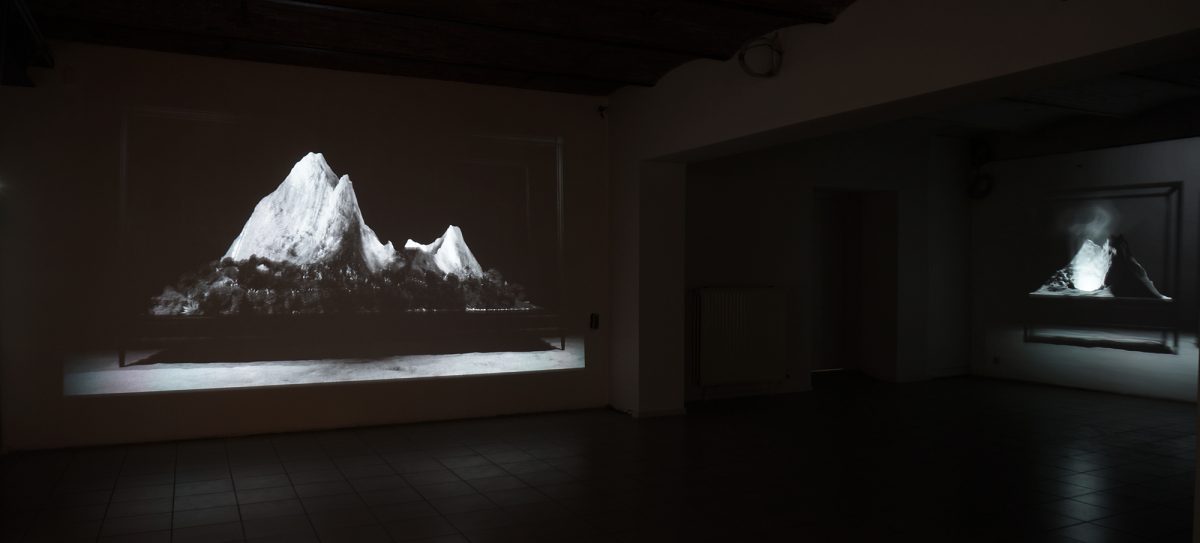
A pilgrimage
Dioramas are for looking at, so that’s exactly what I’m going to do. I’ll make a varied selection of dioramas around the world, within the before mentioned parameters. Each diorama will be visited, and described in words. These texts are either essayistic, observational or fiction, or – true to the nature of the diorama – a blend of real and fake.
By describing these dioramas in text, and having them published on paper, I’m finding a way to add a physical component next to my usual digital work. Digital media is always at a great risk of quickly being outdated, destructed or lost.
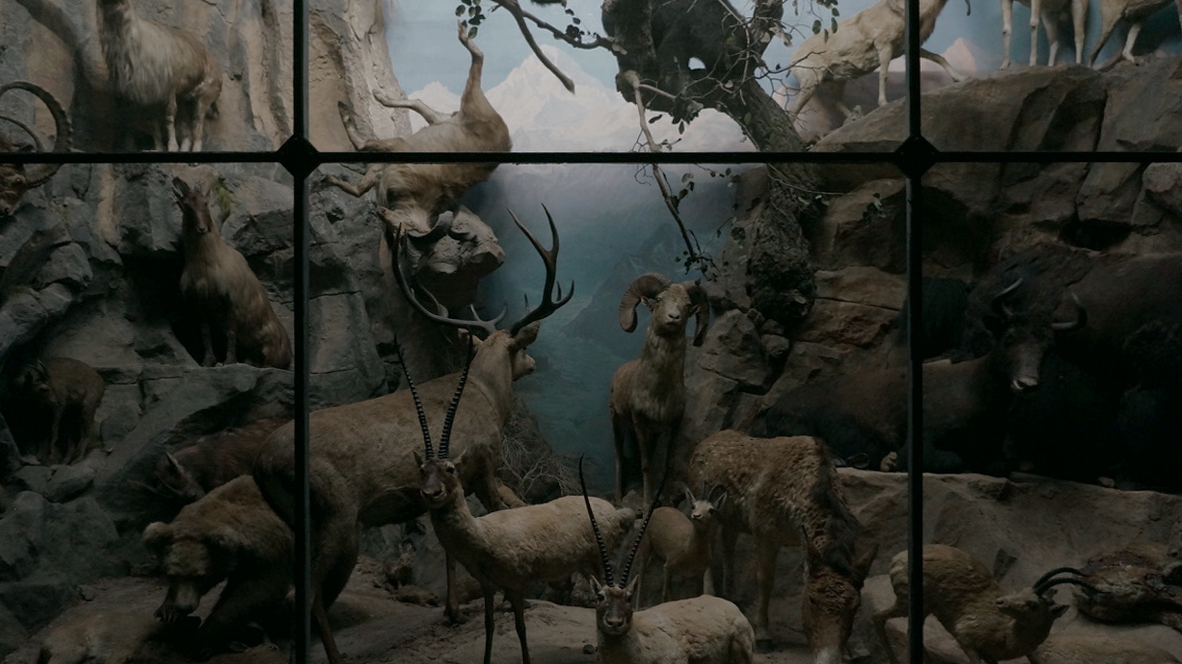
As a by-product, the dioramas will be photographed and added to my already existing archives of diorama-photography. In some cases it might be worth to experiment with video.
I may wish to actually enter a diorama, though I usually prefer the position of the observer over the participant. The texts will be the result of a meditation-like immersion in the diorama, its container, and its visitors.
The portable diorama
I’d like to take my digital dioramas a step further by using augmented reality technology.
Augmented reality (AR) is an experience of a real-world environment where real-world scenes or objects are overlaid by computer-generated additions (3D models, animation, ‘stickers’). This is perceived as an immersive aspect of the real environment.
Augmented reality alters one’s ongoing perception of a real-world environment, but virtual reality completely replaces the user’s real-world environment with a simulated one.
The most well known example of an augmented reality app is also one of the first: Pokémon Go (5). Much used by kids are Instagram filters that can add a pig’s nose, glitter hair, or bunny ears to a video selfie. The technique is also used in some museums to bring conventional dioramas ‘to life’ (6).
5) Niantic/Nintendo, 2016. It uses the mobile device GPS to locate, capture, battle, and train virtual creatures, called Pokémon, which appear as if they are in the player’s real-world location. (source: Wikipedia)
6) See, for instance, also this video registration of an AR diorama at the Ayala Museum in Manila
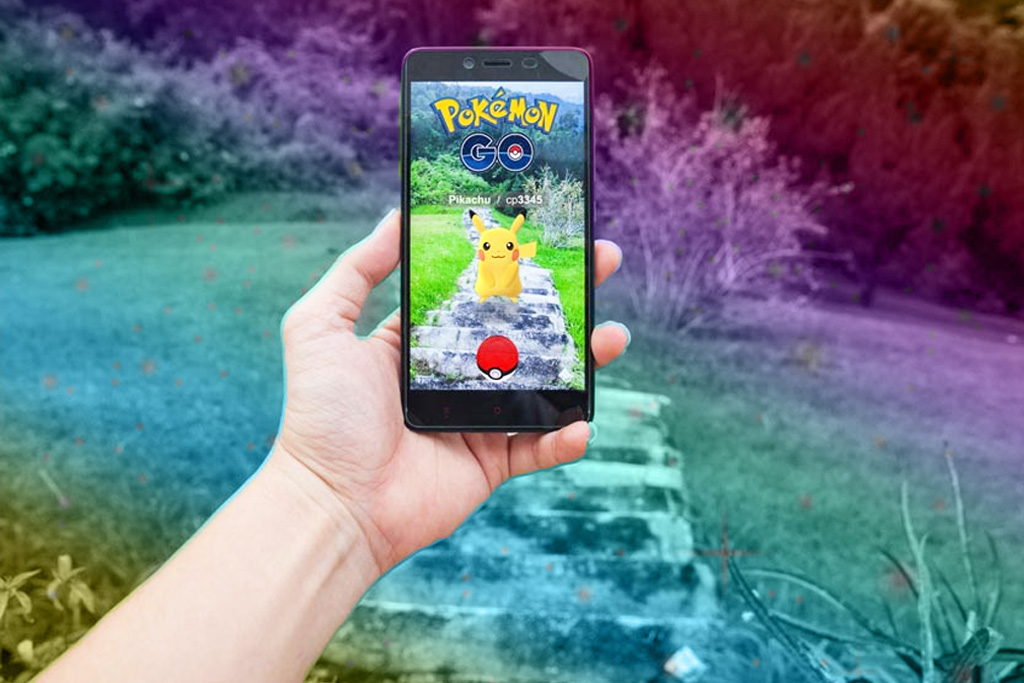
Building an augmented art app.
The research works towards at least one augmented reality app that functions as a portable diorama. The screen of a tablet or mobile phone functions as the glass of a conventional diorama. The app will be non-interactive, as described in the parameters of the diorama research.
Why not work with VR (Virtual Reality) and 360 VR?
- The viewer is, due to the use of clunky VR glasses completely isolated from the real environment, losing the idea of a frame or a glass wall that separates the simulation from the real world.
- The experience can not be shared. With mobile AR, multiple people can watch the scene through the screen of the device. VR is mostly an individual experience.
Building and breaking illusions: critical observations
Breaking the illusion: contemporary art has to find ways to distinguish itself from the whole specter of visual culture in order to help confirm its existence. The disenchantment of the image by breaking the fourth wall is a way to do this. How does art, especially contemporary art, including video art, relate to dioramas or visual illusions in general?

Conversely, building illusions is one of the great achievements of humanity, and closely related to our ability to produce fiction. It’s one of culture’s counter stones, resulting in cinema, theatre, interior design, architecture, art, and literature. It does have some problems, though: the internet is flooded with fake simulations of reality, such as conspiracy theories and irrational ‘news’. What is so appealing about fake?
I’ll expand on the relation between the research and my current body of work a bit further below, by using two examples of my animation works.
Presentations
The Dioramarama
A publication will become the center point of the research: this will bundle collected texts, photos and other visual material. The texts alternate between essay, fiction and relevant historical and scientific backgrounds, hovering on the verge of fake and real, of fiction and fact, true to the nature of the diorama. The written descriptions of the dioramas I’ll visit on my ‘pilgrimage’ will be the base and starting point for the research and the eventual book.
I’m actively going to find a publisher. The book itself needs to be more than just a publication, but has to be edited and designed in function of its subject.
A book will also provide a way for me to make a lasting contribution to my largely digital body of work. Video codecs change all the time, hard drives crash, files go missing. The functionality of the app I mentioned in point 2b will start to disintegrate the moment it is launched.
The book will be an accessible account on all aspects of the dioramas within the parameters I mentioned earlier, and be illustrated with appropriate images, gathered from my own photographic archives and historical archives.
AR app(s), free to download
See a bit further above – The Portable Diorama – and a bit further down – The Unreal: the poetry of similation – for more information about the role of augmented reality in my artistic research.
Exhibition
(Note Oct. 2019: this is, of course, still subject to change, according to where the research leads me.)
The book, the app(s) and all material and artworks that are related to the four years of research will be made into an exhibition: a life sized installation that is a reflection upon the research, and a simulation of the research at the same time.
(Digital) animation will be a cornerstone in processing all data. I’m working towards at least one stand-alone film that can travel the world by going to film festivals and distributors.
Means of communicating the research
(Note Oct. 2019: The Fourth Wall concept has been replaced by The Appeal of the Unreal.)
The project is added to international online artistic research platforms, such as the JAR, Journal for Artistic Research, Network.
The fourth wall: a website
I’m an experienced web designer, and a website or blog is a logical platform for communicating the research progress, and for collecting all kinds of visual material (7). Unfortunately, the best name has already been taken (namely: fuckyeahdioramas).
The Fourth Wall (8) was the name of a blog that I used for exhibition announcements and works in progress from 2007 to 2016. The research is an excellent occasion to revive that concept, and put it to new use (9).
7) see also my Pinterest, a site meant for crafting and interior inspiration, but I’m teaching their algorithm to help me crawl the internet for more interesting and obscure images from art history.
8) www.devierdewand.blogspot.com
9) The fourth wall is a performance convention in which an invisible, imagined wall separates actors from the audience. While the audience can see through this “wall”, the convention assumes, the actors act as if they cannot.
Participation in research groups
(Note Oct. 2019: see also the dhfm blog I set up.)
I’m looking forward to work as part of the new research group Deep Histories Fragile Memories, under supervision of Dr. Wendy Morris. We’re going to publish periodically, combining our researches with external contributions, see more in the next section.
A deeper understanding
The research will provide a deeper understanding of what the role of the diorama is in my current body of work, how it works, and how to use this added knowledge for future works and research projects.
An important part of the ‘digital revolution’ are simulations, whether they’re data-visualisations, predictive models or generators that help to build landscapes for computer games. Here, the diorama has found a new form.
The unreal: the poetry of simulation
In my research I wish to connect the conventional diorama, such as the natural history museum displays, to a new kind of diorama: the one that’s right behind the screens of contemporary technology. On the opposite end of history, I’ll embed the diorama in the tradition of immersive visual illusions, going back to the decorated Prehistoric caves.
Although the research is not aimed at technical innovations, one of the artistic goals is to build an augmented reality app: a virtual and possibly mobile diorama’esque intervention. This means learning a new technique. The app has to have an immersive, life-sized effect on the user. The user won’t be able to interact with the scene. Adding movement to the scene (animation) is debatable, since the user is able to move it’s screen and therefore creates, in a way, their own animation just by moving it around.
Augmented reality is a new and still rarely explored terrain in the visual arts.
As someone who’s intertwined with computers, and uses them for building immersive environments with an affective impact, my relation to digital technology – and by extension ‘dead matter’ – can almost be described as emotional. I’m sensitive to the poetry of at present still infantile artificial intelligence, imitated nature or hardly convincing animatronics.
The AR scene(s) should have an alienating effect. This might include putting neolithic monuments in busy crossroads, for instance. Another option would be to build a narrative virtual architecture – a scripted space (10) – the app-user can move through: a start, middle, and end.
10) Norman M. Klein, The Vatican to Vegas: a history of special effects, 2004, The New Press
(link to the definition on the website of Witte de With, Rotterdam, as part of the eponymous exhibition, 2000)
Scripted spaces is a term coined by media historian Norman Klein. They’re carefully designed and controlled spaces that reconcile cultural meaning with the thrill of the unknown. With their prolific use of special effects and virtual topographies, scripted spaces constitute the mainspring of today’s film industry and computer games. Other examples of the genre are theme parks, casinos, and labyrinths.
Relevance and relationship to the scientific field
I would like my research to be an addition to existing scientific research fields. I have been invited to take part in the VSAC (Visual Arts of Science Conference) to be held in Leuven in Augustus 2019, by showing work and giving a talk about my research. My supervisor Wendy Morris has been collaborating with Johan Wagemans and the Lab of Experimental Psychology for many years.
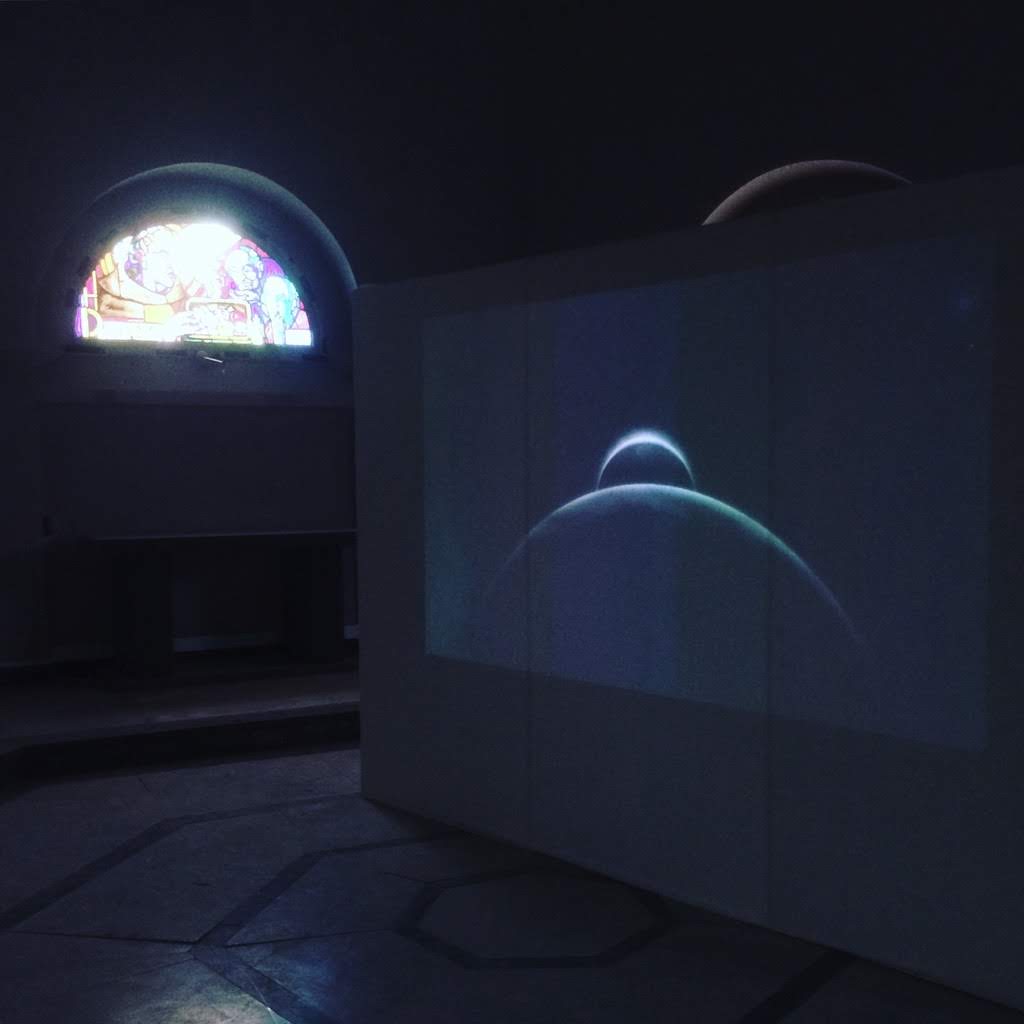
Jan Verpooten (11), one of my research advisors with a background as a postdoctoral fellow in BEE – Behavioral Engineering at KU Leuven, has described my approach as an unusual hybrid between scientific research and artistic imagination. His input as a double PhD in philosophy (KU Leuven) and biology (University of Antwerp), and his cross-disciplinary, imaginative disposition will be a valuable supplement to the research.
11) Jan Verpooten works in the fields of behavioural science and evolutionary biology
For artistic applications concerning augmented reality, I want to connect with Steven Devleminck and his research group at Luca Mediated Environments.
My second research advisor is still to be officially confirmed: Pieternel Vermoortel, artistic director of art space Netwerk Aalst. Wendy Morris will be connected to Netwerk for a two-year project, and Vermoortel will become a facilitator on our research group Deep Histories Fragile Memories.
Philosopher Ann Meskens (KU Leuven, Université de Nice Sophia) will provide ethical assistance.
I certainly hope that my research, and my artistic body of work can bring new or different perspectives on related existing and future research.
Deep Histories Fragile Memories
Under supervision of Wendy Morris, I’ll be working in the new research group DHFMemories, a constellation of artists and academics working around hidden, buried, or forgotten histories with a focus on gender issues and underexposed groups in history.
Since several years I have been involved in helping to close the gender-gap on (the Dutch) Wikipedia, with a focus on female artists. I’m a member of the group ‘Gendergap op nl.wikipedia.org’ (formerly known as ‘Wikidames’). This could be very useful to DHFMemories.
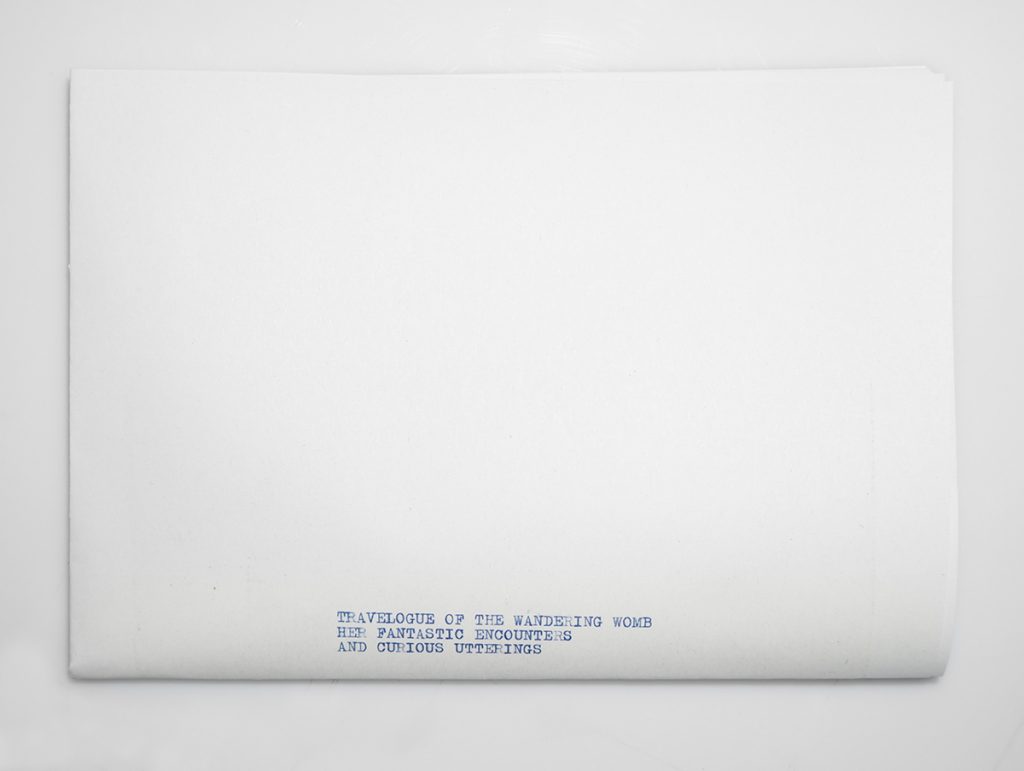
In addition to assisting Morris with building up this new research group, I’ll be responsible for streamlining the publications of DHFMemories, and making sure there’s a continuity in both the visual aspects and the timing of the publications. My experience as an assistant to antiquarian bookseller and publishing house Demian (Antwerp), and my abilities as an artistic graphic designer will be extra assets.
Within the context of DHFMemories I’ll investigate Het lied van Heer Halewijn, one of the very few stories from the Middle Ages that features a female hero: a princess who defeats a serial killer. This text is connected to the European legend of Bluebeard. I’ll work on a diorama honoring the unnamed heroin.
Connection to Intermedia and Narrative Arts
Trained as a classical painter, but now working mainly with digital means, my work moves on the cutting edge between traditional and digital media. Next to my video works, I produce works on paper – prints and leporellos – text, and multimedia installations.
Science fiction is an important genre my work relates to. I’m also concerned with guiding the viewer by using the standard narrative structure of a begin, middle and end. On the other hand: I often use plotless narratives (the ‘loop’).
Research goals and Work Packages (WP)
In Dutch.
- WP1 (research group DHFMemories, research unit Intermedia)
- WP2 (field research, diorama pelgrimage, epistemology of the diorama)
- WP3 (literature studies, writing)
- WP4 (artistic production: technical research, augmented reality app, en writing)
- WP5 (publications and exhibitions)
WP1 (30%) – Deep Histories Fragile Memories (DHFMemories) is een nieuwe onderzoeksgroep onder supervisie van Wendy Morris, met als doel vergeten geschiedenissen aan het licht te brengen, met een nadruk op gender en onderbelichte histories. Mijn taak is het ondersteunen van Morris bij het vormgeven en opbouwen van de onderzoeksgroep, en het overzien van de publicaties.
WP2 (30%) – Veldonderzoek, en het bezoeken van diorama’s is de basis van dit onderzoeksvoorstel, waarbij ik van elk bezocht diorama een diepte-analyse en beschrijvingen maak. Eerst maak ik inventarisatie, waaruit ik een diverse selectie aan de hand van de parameters maak. Hiervoor contacteer ik eerst de betreffende instelling waar het diorama staat opgesteld. Op de lijst staan voorlopig:
- Daguerre’s diorama (Bry-sur-Marne, Frankrijk)
- De schrijverskamers in de Koninklijke Bibliotheek van Brussel
- Het AR of VR diorama van het Moesgård Museum in Aarhus, Denemarken
- De eind 19e eeuwse dioramas van het Biologiska Museet, Skansen, Stockholm
- Diorama(‘s) in pretpark De Efteling, Kaatsheuvel
- American Museum of Natural History, New York
- Missie-diorama’s in kloosters – hiervan is trouwens het bestaan op dit moment nog maar een gerucht
WP3 + WP5 (40%) – In het eerste en tweede jaar zijn tentoonstellingen en eigen publicaties ondergeschikt aan veldonderzoek en de onderzoeksgroep. Artistieke productie wordt pas binnen het onderzoek uitgevoerd naar aanleiding van onderzoeksresultaten. Dat neemt overigens niet weg dat er wel artistieke output gaat zijn, alleen zal die voornamelijk in het atelier plaatsvinden en niet in presentaties.
Noot: de artistieke output komt voort uit het onderzoek, de exacte vorm van die output is daardoor op dit moment nog niet helemaal te voorspellen.
2.
WP1 (20%) – Verder uitbouwen van DHFMemories in publicaties en events, organisatie en assistentie Wendy Morris.
WP2 (30%) – Voortzetting veldonderzoek en schrijven (beschrijvingen)
WP3 + WP5 (20%) – literatuurstudie en schrijven (essay)
WP4 (30%) – De eerste augmented reality app wordt ontwikkeld en gepresenteerd
3.
WP1 + WP5 (30%) – De onderzoeksgroep DHFMemories streeft naar regelmatige publicaties in een vlugschrift-vorm. Na twee jaar ontstaat er een ‘body of work’, waarop gereflecteerd en gereageerd kan worden. Dit kan worden gekoppeld aan een presentatiemoment.
WP2 (20%) – Voortzetting veldonderzoek en schrijven (beschrijvingen).
WP3 (20%) – De outline voor de eindpresentatie en een uitgever voor de ‘Dioramarama’ (werktitel) publicatie worden duidelijk.
WP4 (30%) – Start productie single screen animatie, naast een extra AR app.
WP5 (20%) – De publicatie van teksten die uit het onderzoek voortkomen, en een tussentijdse, voorbereidende presentatie van de artistieke output. Onderzoek naar geschikte tentoonstellingslokaties.
4.
WP1 (20%)
WP2 (20%)
WP4 en WP5 (60%) – In het kader van de doctoraatsverdediging en het eindwerk ligt dit jaar de nadruk op productie en presentatie.
Aan het einde van de vier jaar moeten de werken naadloos aansluiten op de teksten en bevindingen van het onderzoek, of juist tegenspreken.
De tentoonstelling is tegelijkertijd de drager voor de AR app, en het presentatiemoment voor de publicatie.
5.
Na oktober 2023 hoop ik mijn werk voort te kunnen zetten in zowel de academische wereld als in de beeldende kunst. Het doctoraat zorgt voor een onwrikbare basis.
Relevant art works relating to the research
Inertia
Zie: Informatie en installatie registratie op
3-channel video installation, HD1080, b/w, sound, 10’00”, 2014/2015, edition of 3+1 artist copy | Film 1: seamless loop, HD1080, b/w, no sound, 2’28”, 2014 | Film 2: seamless loop, HD1080, b/w, no sound, 3’00”, 2014 | Film 3: HD1080, b/w, sound, 10’00”, 2014/2015
2014 Van Stof tot Asse, Asse (B)
2015 De Cacaofabriek, Helmond (NL)
2015 LhGWR Gallery, The Hague (NL)
2015 Amsterdam Art Fair, Amsterdam (NL)
2016 Heden: Het Heelal, VHDG, Leeuwarden (NL)
2016 Rotterdamse Schouwburg, Mediawand, Rotterdam (NL)
2017 Collectie De Groen, Arnhem (NL)
2017 Uppsala Short Film Festival, Uppsala
2017 DE Studio, Antwerp (B)
2018 Go Short Film Festival, Nijmegen (NL)
2018 Black Swan Gallery, Brugge (B)
2019 Cacaofabriek, Helmond (NL)
2019 VSAConferentie, Leuven (B, aug)
The_Archive (Te pito o te kainga)
Zie:
Informatie, installatie en film op
Seamless loop, HD, colour/sound, 10’00”, 2017
Lost_Horizon, LhGWR, The Hague, NL, 2017
DE Studio, Center for the arts, Antwerp, BE, 2017
Final Proposal, Pulsar art space, Antwerp, 2018
Ongezien #3, BP Building/Bank Delen, Antwerp, 2018
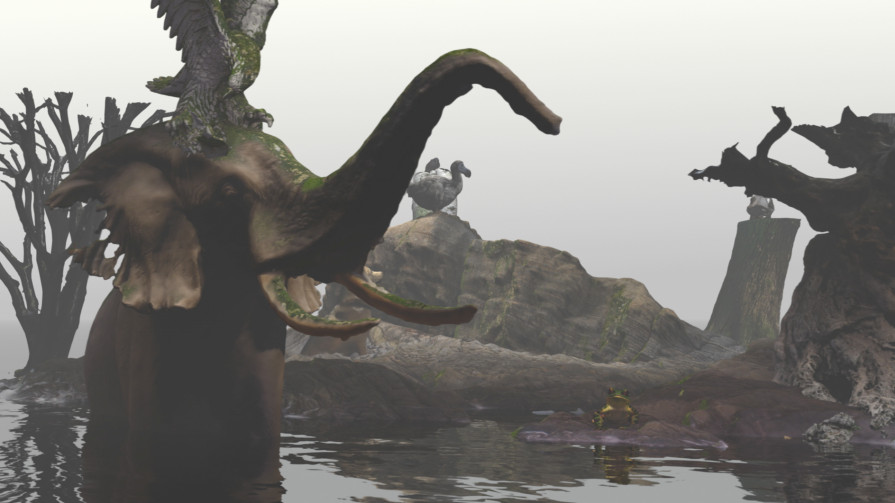
Note Oct. 2019: During the research period goals may be adjusted.
